The sweet sting of Nova Scotia's tiniest 'livestock' industry
Being forced to grab an EpiPen and stab herself through her thick canvas coveralls with the life-saving needle is an occupational hazard Lauren Park must be prepared to face in her much-loved career.
But the beekeeper doesn't dwell on the worst-care scenario — a sting that suddenly brings on in her a severe allergic reaction. Instead, she takes frequent trips to an allergist in Halifax and focuses on the tiny creatures that captivate her.
"By the time that my allergy rolled around my mind was pretty made up," she says.
"When you have a few seasons of beekeeping under your belt … you start to kind of learn how to act around the hives and how to get in and out without being noticed."
Park is among a small cohort of young beekeepers making a living raising honeybees in Nova Scotia. The industry, one dominated by aging and mostly male beekeepers, has grown in recent years. In 2019, 191 new beekeepers registered with the province.
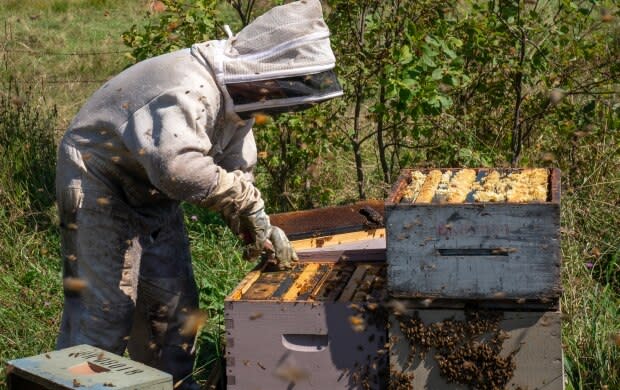
The vast majority of beekeepers in Nova Scotia do it as a hobby and have just a few hives. There are only 44 operations with more than 50.
Park, whose family had a farm in Ontario, initially came to Nova Scotia to study music at Acadia University. The bassoon is a far cry from bee yards, but she found herself drawn to the "underrated" segment of agriculture.
She now manages her own hives and works at Cosman and Whidden, one of Nova Scotia's largest honey producers. She harvests honey, raises queen bees and prepares colonies for blueberry pollination.
"The way that colony operates, it's fascinating. I really love that this job has such a steep learning curve that even after a little over a decade I still have a lot of things to learn from them," she says, while examining a frame pulled from a hive in a small bee yard in Grand Pré, N.S.
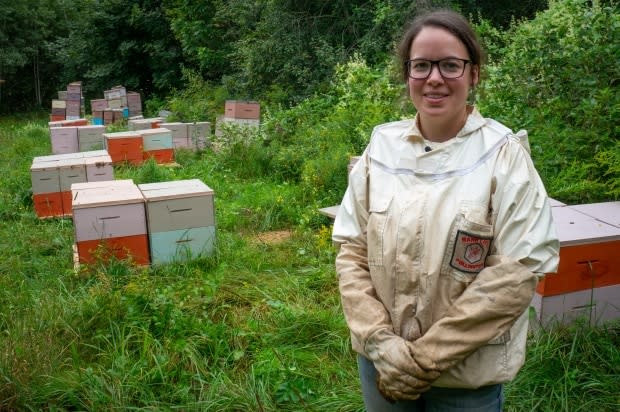
Around the world, habitat loss, climate change, pests and pesticides all threaten the survival of wild bees. There are hundreds of species in Canada. The yellow-banded bumble bee, for instance, used to be one of the most common but numbers have dropped by more than a third in recent years. It is now considered "vulnerable" in Nova Scotia.
But the bees Park works with aren't wild — they're considered "livestock" — and don't always face the same type of threats as species that fend for themselves.
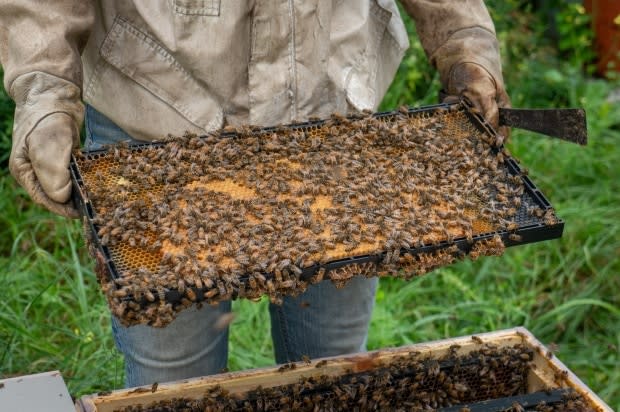
Beekeepers manage their honeybee colonies — ensuring they're bundled up for the winter, feeding them sugar syrup (containing carbohydrates) or pollen patties (that have protein) when they're not faring well, and keeping a close eye out for invasive mites.
There have never been more honeybees in Nova Scotia than now, according to Park, in part due to their crucial role in agriculture and the uncertainty around wild bees. Commercial beekeepers provide a consistent source of pollination for everything from blueberry crops to apple orchards to pumpkins and cranberries.
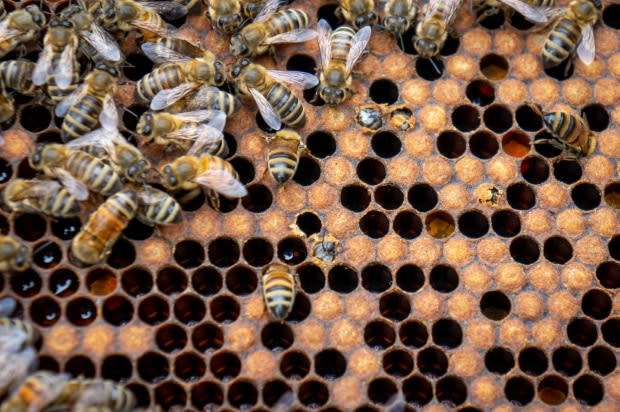
Importing rented honeybee hives for several weeks during the spring pollination season has become the norm in Nova Scotia's $100-million blueberry industry.
Part of Robyn McCallum's job is to support blueberry growers and beekeepers. She works across the Maritimes with the Atlantic Tech Transfer Team for Apiculture, part of a Crown agency, advising growers how many hives to put in a field and when, in order to maximize fruit production.
McCallum studies hive strength and keeps a close eye on whether honeybees are getting enough food. It doesn't help the growers if bees arrive in fields too early and drift off to nearby meadows to find wildflowers.
"We don't want them to swarm, but we don't want them to be weak," she says.

Though there is bee research happening internationally, McCallum says, much of it doesn't apply to the Atlantic Canadian climate.
Lately, she's found unpredictable weather has created more challenges. A cold spell during the summer months or late spring can strain a hive and require pollen supplementation so bees don't starve.
"You're constantly making notes in your head and figuring out, you know, what caused this. I thought the hive looked great last week. Why does it look like this? What happened?" she says.
"I see nutritional stress in the summer from a changing climate. So what can I do about that? I can start thinking about nutritional supplements and getting beekeepers on board to do that research."
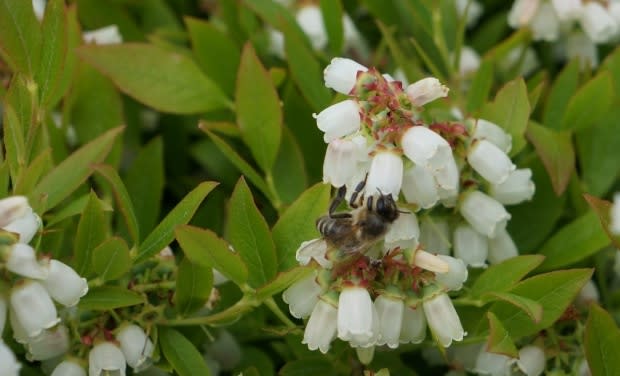
A tough winter can annihilate bee colonies, which must be managed to survive in the damp and relatively cold climate.
Across Canada, beekeepers lose a third of their stock during the coldest months. Nova Scotia's average overwintering loss is a bit better — at about 20 per cent last year, but that still means beekeepers have to scramble to rebuild their colonies, particularly those that rent their hives out in May and June.
Hives also need healthy queens. Each spring, Nova Scotian beekeepers spend about $180,000 importing replacement queens, at a cost of about $45 each. They come from places like New Zealand, California and Hawaii: regions that have very different winters.
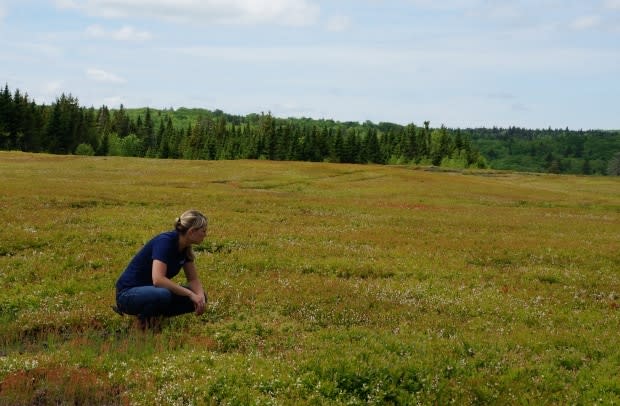
The provincial government hopes eventually the industry will not have to rely on imports.
Agriculture Minister Keith Colwell envisions enough queens will be raised locally that Nova Scotia will ultimately be able to export to other parts of Canada and the world. The benefits, he believes, would include a reduced risk of disease from imported bees.
"We really want to make the bee industry so they're self sufficient," he says.
Some beekeepers are sceptical that will ever happen with Nova Scotia's cool springs, which make it hard to raise queens developed enough to insert into a hive after a tough winter.
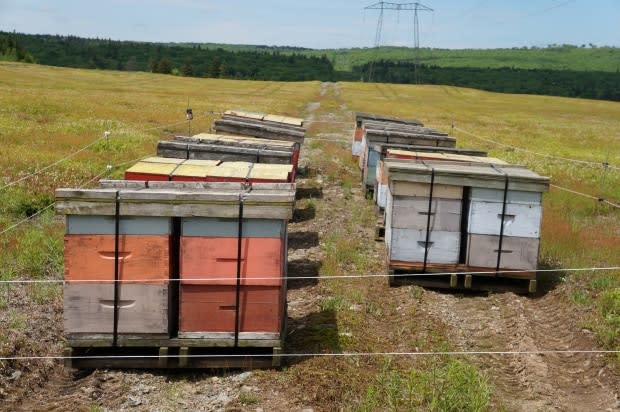
But dozens of local beekeepers are trying to raise queens better suited to the Maritime climate. In 2018, they reared about 15,400 new queens, according to provincial statistics.
Colonies typically only have one queen. In order to produce new ones, nurse bees feed larvae a protein-rich secretion called royal jelly, a catalyst of sorts that transforms the larvae into queens and not worker bees.
It can be time consuming and disappointing. A bird or other insect could pick off the queen on a maiden flight. A mature queen bee removed from a hive could storm back and destroy the dozens of cells in a honeycomb filled with eggs.
"Things like that can happen in an hour. I can go in, they're fine and then hour back she could fly back and you never know. It can be a gamble some time," says beekeeper Lilly Burgoyne, who is in her third year raising queens at Kittilsen's Honey in Debert, N.S.
Unlike many other types of agriculture, beekeepers don't have to own land and or save up for a steep quota. But farming is farming and bees can't be ignored over a weekend. Some mornings Burgoyne is out at 4 a.m. as she carves out a living.
"Beekeeping is a smaller industry here but I think it has the potential to grow," she says.
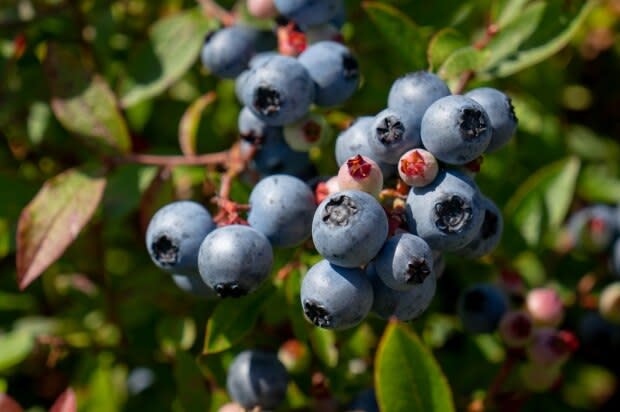
Back in Grand Pré, Lauren Park is keeping an eye on her own queen bees. She speaks softly to them as she lifts the cover off each hive, checking to see how the colonies inside are faring.
She's looking at the brood patterns — making sure the worker bees are producing enough honey and caring for the larvae laid by the hive's lone queen bee.
There are tens of thousands of worker bees in every hive. Some clean and feed the queen. Others are responsible for keeping the hive's temperature constant year-round by vibrating their wings.
During the busy summer weeks, when the older ones spend their days foraging for nectar and pollen, they only live about six weeks.
"I love that kind of graduated job system of the bees and I would be lying if I said I didn't love the female dominance in the hive as well," Park says with a laugh.
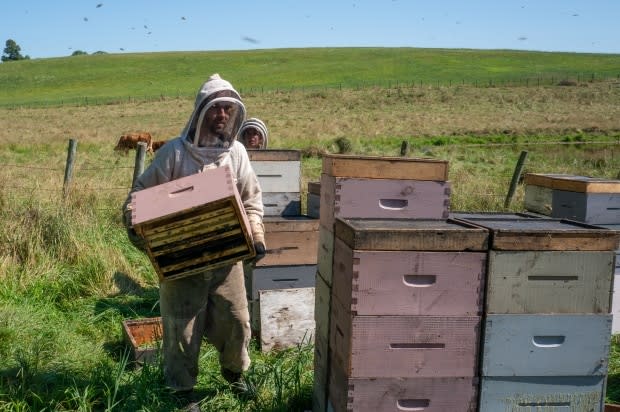
MORE TOP STORIES


